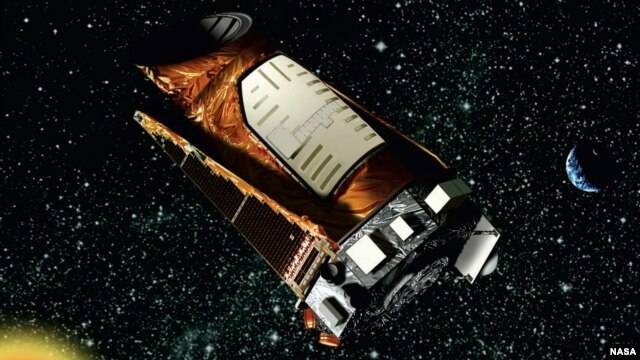ScienceRocks
Democrat all the way!
- Banned
- #1
Astronomers discover exoplanet neighbor smaller than Earth
July 18, 2012
UCF scientists have detected what could be its first planet, only two-thirds the size of Earth and located right around the corner, cosmically speaking, at a mere 33 light-years away. Credit: Artist's Rendering provided by NASA The University of Central Florida has detected what could be its first planet, only two-thirds the size of Earth and located right around the corner, cosmically speaking, at a mere 33light- years away. The exoplanet candidate called UCF 1.01, is close to its star, so close it goes around the star in 1.4 days.
The planet's surface likely reaches temperatures of more than 1,000 degrees Fahrenheit. The discoverers believe that it has no atmosphere, is only two-thirds the gravity of Earth and that its surface may be volcanic or molten. "We have found strong evidence for a very small, very hot and very close-by planet with the help of the Spitzer Space Telescope," said Kevin Stevenson, a recent Ph.D graduate from the UCF and lead author of the paper, which appears online tomorrow in The Astrophysical Journal. "This discovery is a significant accomplishment for UCF." Stevenson and his colleagues were studying a hot-Neptune exoplanet, designated GJ 436b, already known to exist around the red-dwarf star GJ 436, when data revealed clues that led them to suspect there could be at least one new planet in that system, perhaps two. The team noticed slight dips in the amount of infrared light streaming from the star. A review of Spitzer archival data showed that the dips were periodic, suggesting that a planet might be blocking out a small fraction of light as it passed in front of GJ 436, as seen from Earth. "I could see these faint dips in the starlight and I wanted to determine their source. I knew that if these signals were periodic, they could be from an unknown planet," said Stevenson, who is now a postdoctoral scholar at the University of Chicago. So he, UCF planetary sciences professor Joseph Harrington and UCF graduate student Nate Lust began looking at the data. They sifted through hundreds of hours of observations collected from Spitzer, the Deep Impact spacecraft, the ground-based Very Large Telescope in Chile and the Canada-France-Hawaii Telescope near the summit of Mauna Kea in Hawaii.
Read more at: Astronomers discover exoplanet neighbor smaller than Earth
July 18, 2012
UCF scientists have detected what could be its first planet, only two-thirds the size of Earth and located right around the corner, cosmically speaking, at a mere 33 light-years away. Credit: Artist's Rendering provided by NASA The University of Central Florida has detected what could be its first planet, only two-thirds the size of Earth and located right around the corner, cosmically speaking, at a mere 33light- years away. The exoplanet candidate called UCF 1.01, is close to its star, so close it goes around the star in 1.4 days.
The planet's surface likely reaches temperatures of more than 1,000 degrees Fahrenheit. The discoverers believe that it has no atmosphere, is only two-thirds the gravity of Earth and that its surface may be volcanic or molten. "We have found strong evidence for a very small, very hot and very close-by planet with the help of the Spitzer Space Telescope," said Kevin Stevenson, a recent Ph.D graduate from the UCF and lead author of the paper, which appears online tomorrow in The Astrophysical Journal. "This discovery is a significant accomplishment for UCF." Stevenson and his colleagues were studying a hot-Neptune exoplanet, designated GJ 436b, already known to exist around the red-dwarf star GJ 436, when data revealed clues that led them to suspect there could be at least one new planet in that system, perhaps two. The team noticed slight dips in the amount of infrared light streaming from the star. A review of Spitzer archival data showed that the dips were periodic, suggesting that a planet might be blocking out a small fraction of light as it passed in front of GJ 436, as seen from Earth. "I could see these faint dips in the starlight and I wanted to determine their source. I knew that if these signals were periodic, they could be from an unknown planet," said Stevenson, who is now a postdoctoral scholar at the University of Chicago. So he, UCF planetary sciences professor Joseph Harrington and UCF graduate student Nate Lust began looking at the data. They sifted through hundreds of hours of observations collected from Spitzer, the Deep Impact spacecraft, the ground-based Very Large Telescope in Chile and the Canada-France-Hawaii Telescope near the summit of Mauna Kea in Hawaii.
Read more at: Astronomers discover exoplanet neighbor smaller than Earth


